#emmelia
Text
Since it's marauders non-men month and I didn't post anything about it yesterday, I wanted to share some of my headcanons on Amelia Bones and Emma Vanity
Amelia:
One year above the marauders
Hufflepuff
Shared dorm with Emmeline Vance and Hestia Jones
Aroace, non binary they/them, preferred to go by Am
Loved Quidditch and always supported Emmeline
Swedish but sucked at the language
Met Emma Vanity through Emmeline and they became friends quickly, and in 7th year diced to have a queerplatonic relationship
Twins with Edgar Bones and had a younger brother named Michael (Susan Bones's father)
Was a fan of KISS
Could look kinda mean and scary, but was a true sweetheart
Loved dying their hair different colours every few weeks
In 5th year they would wear sunglasses EVERYWHERE and nobody knew why
Very smart, best subject was Transfiguration
Atheist
Their family was Christian, but very accepting, so the had great contact with them. After all of them were killed Am was heartbroken
Micheal would sometimes leave them with little Susan, but they didn't really mind (what is the gender neutral term for aunt/uncle?)
Loved their niece, younger brother and sister-in-law

Emma Vanity
Halfblood
Obsessed with Quidditch (Slitherin Keeper)
One year above the marauders
Childhood friends with Emmeline Vance and Benjy Fenwick
In Hogwarts met Amelia, Hestia, Caradoc Dearbone and Edgar Bones
You say one bad thing about her friends and you can dig your grave 🪦
Aroace mean lesbian - she/they
Didn't really care about clothes or anything but still was somehow the 'IT girl'
Could and will kill you with just the stare
Scarcastic
Very strict Quidditch captain, but had a soft spot for Reg and Dorcas
QPR with Am
Had a soft spot for little Susan and was the 'could auntie Emma'
Mexican
Her father died when they were little,raised by her mom and grandma
Grandma was kinda conservative so they had a love-hate relationship when Emma came out
Knew Spanish
Their family was good friends with Fenwicks and Vances
A member of Order of the Phoenix (first and second)
Between wars played professionally
One of the only survivors
Almost went mad after Emmeline's and Amelia's death (was ready to bury Snape and Dumbledore alive)
Her and Mary were keeping each other sane

#amelia bones#Emma Vanity#emmelia#emma vanity x amelia bones#emmeline vance#hestia jones#marauders era#marauders era women#dead gay wizards#marauders non men month
10 notes
·
View notes
Text
amelia and emmeline raising susan together though
#baby susie calling them aunt amy and aunt emmy#amelia bones#emmeline vance#amelia x emmeline#ameline ? emmelia?#susan bones#i just think theyre neat
3 notes
·
View notes
Text
WLW Ships in the marauders era: A guid for the confused ones:
Marylily/Macevans (Mary McDonald/Lily Evans)
Marlily (Marlene McKinnon/Lily Evans)
Dorlily (Dorcas Meadowes/Lily Evans)
Lilydora/Pandalily (Pandora Lovegood/Lily Evans)
Crystalflower (Sybil Trelawney/Lily Evans)
Andybill\Syndy (Andromeda Black/Sybil Trelawney)
Wholeflower/mirrorflower/evanity (Emma Vanity/Lily Evans)
Nobleflower (Alice Fortescue/Narccisa Black)
Narlily/flower²/Lilycissa (Narcissa Black/Lily Evans)
Zablack/Narini (Louise Zabini/Narcissa Black)
Mysteryquill (Rita Skeetet/Louise Zabini)
Dorlene (Dorcas Meadowes/Marlene McKinnon)
Marylene (Mary McDonald/Marlene McKinnon)
Mardora (Marlene McKinnon/Pandora Lovegood)
Maryline/Emmary (Emmeline Vance/Mary McDonald)
Wonderflower (Alice Fortescue/Lily Evans)
Dormary (Dorcas Meadowes/Mary McDonald)
Pandoracs (Pandora Lovegood/Dorcas Meadowes)
Sydora (Sybil Trelawney/Pandora Lovegood)
Sybline (Sybil Trelawney/Emmeline Vance)
MacPop/Wiseflower (Minerva McGonagall/Poppy Pomfrey)
Emmaline (Emma Vanity/Emmeline Vance)
Ameline (Emmeline Vance/Amelia Bones)
Emmelia (Emma Vanity/Amelia Bones)
Amedora (Amelia Bones/Pandora Lovegood)
Vanjones (Emma Vanity/Hestia Jones)
Vansjones (Emmeline Vance/Hestia Jones
Quillkiller (Rita Skeeter/Bellatrix Black)
#mcgonagall x pomfrey#marylily#marlily#dorlene#Pandylily#nobleflower#mysteryquill#marylene#maryline#wonderflower#wlw pride#wlw#wlw ships#sapphic#lasbians#wlw ships in the marauders fandom#pride#girls#marauders#Harry Potter#fannon#lasbian#lgbtq#dormary
67 notes
·
View notes
Text
SAINT OF THE DAY (January 10)
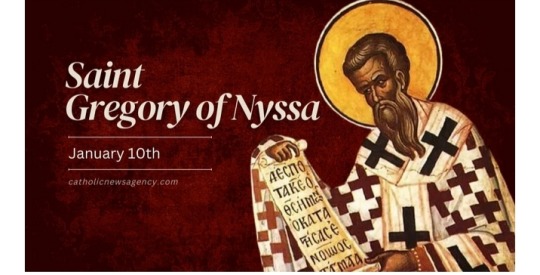
Gregory of Nyssa was born into a deeply religious family.
His mother, Emmelia, was the daughter of a martyr. Two of his brothers, Basil of Cæsarea and Peter of Sebaste, became bishops like himself.
His eldest sister, Macrina, became a model of piety and is also honored as a Saint.
It would seem that the young Gregory married at some point:
There exists a letter addressed to him by Gregory of Nazianzus condoling him on the loss of a woman named Theosebeia, who must have been his wife and is venerated as a Saint in the Orthodox faith.
According to Gregory of Nazianzus, it was his brother Basil who performed the episcopal consecration of Gregory around 371.
On arriving in his see, Gregory had to face great difficulties.
Demosthenes, governor of Pontus, ordered the Bishop of Nyssa to be seized and brought before him.
A Synod of Nyssa deposed him. He was reduced to wander from town to town, until the death of Emperor Valens in 378.
The new emperor, Gratian, published an edict of tolerance, and Gregory was able to return to his see, where he was received with joy.
In 379, he assisted at the Council of Antioch, which had been summoned because of the Meletian schism.
He also asserted the faith of Nicaea and tried to put an end to Arianism and Pneumatism in the East.
It is very probable that Gregory was present at another council, the Council of Constantinople in 383.
Between 385 and 386, he disappears from history but not without leaving a significant number of theological writings.
He made significant contributions to the doctrine of the Trinity and the Nicene Creed.
7 notes
·
View notes
Text
𝗮𝗻 𝗶𝗻𝘁𝗿𝗼𝗱𝘂𝗰𝘁𝗶𝗼𝗻 𝘁𝗼 𝗺𝗲! 🫶🏼

hi my name is emmelia louise, you can call me any nickname really i wont mind!
i go by she/her and am straight!
my main interests are the outsiders, shadow and bone, six of crows, harry potter / marauders era, tasm!peter parker, and taylor swift!
i am 20 years old and am a white cis girl, i write here and on wattpad (on wattpad is where i write my stories, here is for oneshots and requests)!
here are my socials, if you like me give me a follow !🫶🏼🪩🫐

#taylor swift#nikolai lantsov x reader#kaz brekker x reader#shadow and bone x reader#remus x reader#🫶🏼 literati writes!
10 notes
·
View notes
Text
Today, the Church remembers and gives thanks for one of the greatest Christian thinkers, teachers, and saints: Gregory of Nyssa.
Ora pro nobis.
Gregory of Nyssa (c. A.D. 335 – 395), was bishop of Nyssa from 372 to 376 and again from 378 until his death. Gregory, his elder brother, Basil of Caesarea, and their friend Gregory of Nazianzus, are collectively known as the Cappadocian Fathers.
Gregory lacked the administrative ability of his brother Basil or the contemporary influence of Gregory of Nazianzus, but he was an erudite theologian who made significant contributions to the orthodox doctrine of the Trinity and the Nicene Creed.
Gregory's parents had suffered persecution for their faith: he writes that they "had their goods confiscated for confessing Christ." Gregory's maternal grandmother, Macrina the Elder is also revered as a saint and his maternal grandfather was a martyr as Gregory put it "killed by Imperial wrath” under the persecution of the Roman Emperor Maximinus II.
Gregory's temperament is said to have been quiet and meek, in contrast to his brother Basil, who was known to be much more outspoken.
Gregory was first educated at home, by his mother Emmelia and sister Macrina. Little is known of what further education he received. It seems likely that he continued his studies in Caesarea, where he read classical literature, philosophy and perhaps medicine. Gregory himself claimed that his only teachers were Basil, "Paul, John and the rest of the Apostles and prophets.”
Gregory was a highly original and sophisticated thinker, and his writings are often difficult to classify. This is often due to the lack of systematic structure and the presence of terminological inconsistencies in Gregory's work.
Gregory, following Basil, defined the Trinity as "one essence in three persons", the formula adopted by the Council of Constantinople in 381. Like the other Cappadocian Fathers, he was a “homoousian”, a believer in the essential oneness of God, three in person but one in being. According to Gregory, the differences between the three persons of the Trinity reside in their relationships with each other, and the triune nature of God is revealed through divine action (despite the unity of God in His action).
Gregory was one of the first theologians to argue that God is infinite. His main argument for the infinity of God is that God's goodness is an essential characteristic of God, and that being limitless it follows that God is also limitless. An important consequence of Gregory's belief in the infinity of God is his belief that God, as limitless, is essentially incomprehensible to the limited minds of created beings, in contrast to some of his contemporaries, and of many preachers today. In his ‘Life of Moses’, Gregory writes: "...every concept that comes from some comprehensible image, by an approximate understanding and by guessing at the Divine nature, constitutes a idol of God and does not proclaim God."
Gregory's theology was thus apophatic: that is, he proposed that God should be defined in terms of what we know He is not rather than what we might speculate Him to be. Accordingly, he taught that due to God's infinitude, a created being can never reach an absolute understanding of God, and thus for man in both life and the afterlife there is a constant progression towards the unreachable knowledge of God, as the individual continually transcends all which has been reached before. In the ‘Life of Moses’, Gregory speaks of three stages of this spiritual growth: initial darkness of ignorance, then spiritual illumination, and finally a darkness of the mind in mystic contemplation of the God who cannot be comprehended.
Gregory seems to have believed so deeply in the love of God that ultimately nothing and no one in creation could fail to accept God’s love, and so believed that humankind will be collectively returned to sinlessness, while still paradoxically maintaining the orthodox belief in the necessary sacrament of Baptism for salvation, and that human free will, even in the full presence of God, could still choose to remain separated from God.
Gregory's beliefs about human nature were founded on the essential distinction between the created and uncreated. Man is a material creation, and thus limited, but created with limitless capacity in that his immortal soul has an indefinite capacity to grow closer to God through the imitation of Christ. Gregory also held such a high view of humankind the he strongly believed that the soul is created simultaneous to the creation of the body at conception, and that unborn children were thus full and true persons made in the image of God. This also informed his teachings about the inherent evil of slavery.
To Gregory, the human being is exceptional, being created in the image of God. Humanity is theomorphic both in having self-awareness and free will, the latter which gives each individual existential power, because to Gregory, in disregarding God one negates one's own existence. In his ‘Song of Songs’, Gregory metaphorically describes human lives as paintings created by apprentices to a master: the apprentices (the human wills) imitate their master's work (the life of Christ) with beautiful colors (virtues), and thus man strives to be a reflection of Christ.
Gregory was one of the first Christian voices to say that slavery as an institution was inherently evil and sinful. He believed that slavery, as did abortion, violated mankind's inherent worth, and the nature of humanity to be free; a departure from classical, and Judeo-Christian precedent which he rooted in Genesis, arguing that man was given mastery of animals but not of humans. His was the first and only sustained critique of the institution of slavery and infanticide made in the ancient world.
Anthony Meredith writes of Gregory's mystical and apophatic writings in his book Gregory of Nyssa (The Early Church Fathers) (1999):
"Gregory has often been credited with the discovery of mystical theology, or rather with the perception that darkness is an appropriate symbol under which God can be discussed. There is much truth in this....Gregory seems to have been the first Christian writer to have made this important point..."
J. Kameron Carter writes about Gregory's stance on slavery, in the book Race a Theological Account (2008):
"What interests me is the defining features of Gregory's vision of the just society: his unequivocal stance against 'the peculiar institution of slavery' and his call for the manumission of all slaves. I am interested in reading Gregory as a fourth century abolitionist intellectual....His outlook surpassed not only St. Paul's more moderate (but to be fair to Paul, in his moment, revolutionary) stance on the subject but also those of all ancient intellectuals -- Pagan, Jewish and Christian - from Aristotle to Cicero and from Augustine in the Christian West to his contemporary, the golden mouthed preacher himself, John Crysotom in the East. Indeed, the world would have to wait another fifteen centuries -- until the nineteenth century, late into the modern abolitionist movement -- before such an unequivocal stance against slavery would appear again."
Blessed Gregory, we remain still so mired in sin that there are more humans being held in slavery, or murdered as unborn infants, today than at any time in recorded history. There are so many who believe that they know with certainty the mind of God that they invoke the Holy One to do terrible acts of violence, or lead them away from the true Faith and lead many astray.
That we, made in the image of God, called to pursue the imitation of Christ and work for the freedom, life, and salvation of all peoples, might return in all humility to the mystical/interior meditation upon the absolute love of God... ora pro nobis.
Amen.
Almighty God, you have revealed to your Church your eternal Being of glorious majesty and perfect love as one God in Trinity of Persons: Give us grace that, like your bishop Gregory of Nyssa, we may continue steadfast in the confession of this faith, and constant in our worship of you, Father, Son, and Holy Spirit; for you live and reign forever and ever.
Amen.

#father troy beecham#christianity#jesus#saints#god#salvation#peace#faith#early church#theology#abortion
2 notes
·
View notes
Text
Please take a look at this and, if you can, donate. My cat's urinary tract is blocked. We've been to the vet already and they unblocked it, but now he's blocked again. Pet insurance won't work in this situation because it requires you to pay out of pocket and then reimburses you. I don't want my cat to die.
#catblr#petblr#cat#pet cat#gofundme#donations#financial assistance#cats of tumblr#pets of tumblr#tuxedo cat#tuxedo kitty
2 notes
·
View notes
Text
Christian Iconography relating to marriage
Icon as Christ as a Bridegroom

Christ the Bridgegroom is symbolic of marriage within the Orthodox Church. The ropes that bind his hand are a universal symbol of marriage within the Orthodox Church, symbolising the unification of the souls under the marriage. The reed, a symbol of humility in relationships, and his crown a symbol of Christ as the head of families and relationships.
Christ as Pantokrator
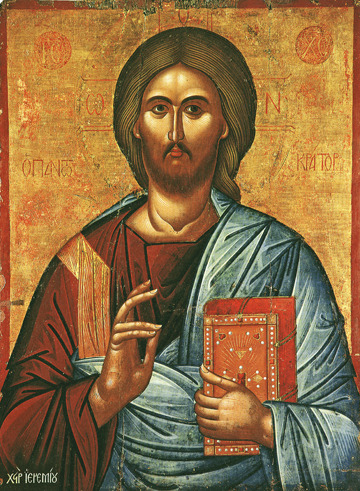
Christ as Pantokrator is a common wedding gift, symbolising the rule of Christ over relationships
St. Argyre

St. Argyre the New Martyr is the patron saint of marriage, one who was killed in order to respect her marriage vows. She if often called upon to find a spouse, and to strengthen the current relationship.
Priscilla and Aquila

St. Priscilla and St. Aquilla are two married Saints themselves named in the New Testament. St. Aquilla is traditionally listed among the 70 disciples of Christ who lived with St. Paul the Apostle. The two saints are referred to as the patron Saints of Love and Marriage and the strength they gave to the early churches was based on their love for eachother.
Saint Basil the Elder and his wife Saint Emmelia
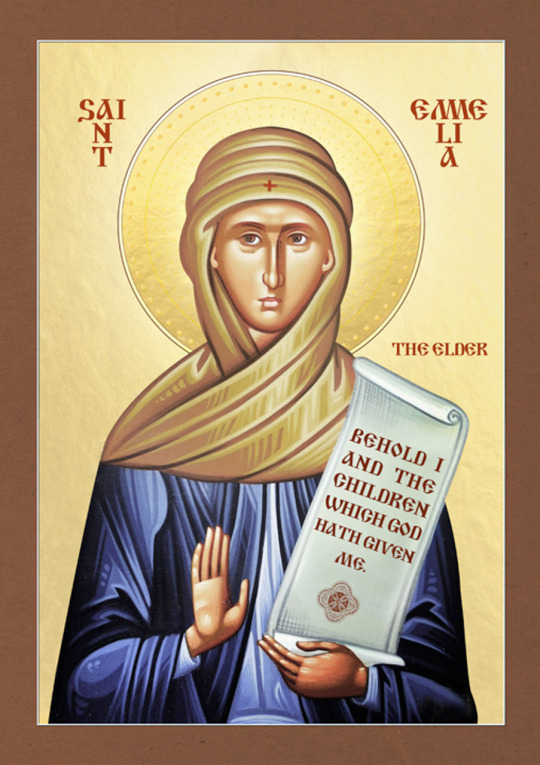
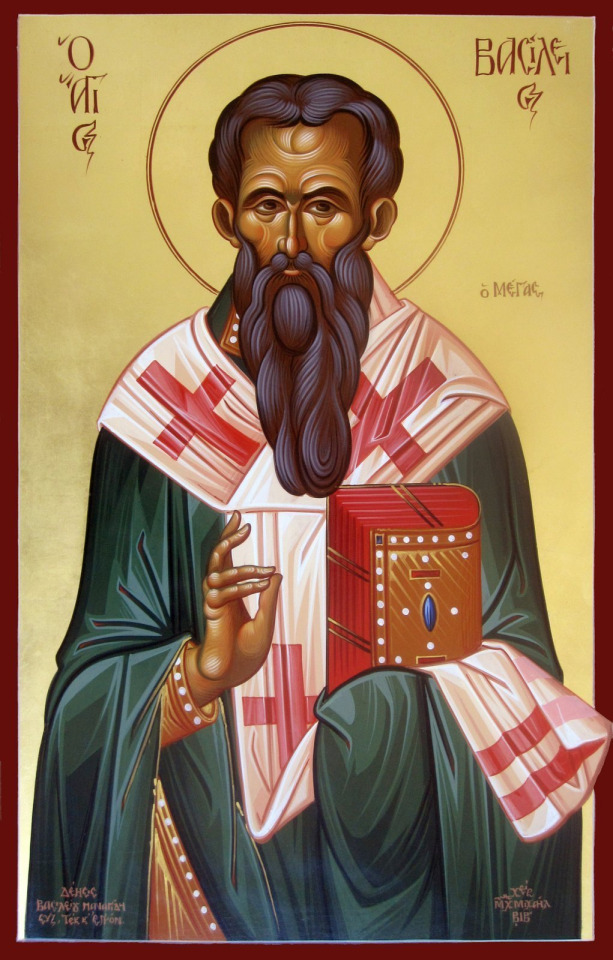
St. Basil and St. Emmelia are two Orthodox Christians who greatly influenced Christian history. Of their 9 children, 5 are remembered as Saints, many of them being influential in theology and patristic writings. They are the perfect example of a godly marriage and family.
St. Xenia of St. Petersburg
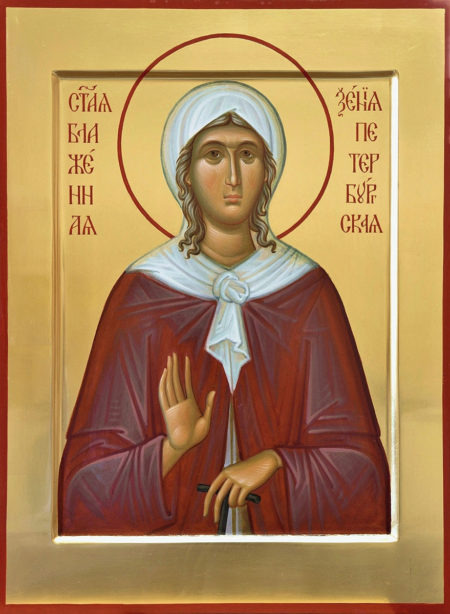
St. Xenia of St. Petersburg was a Saint who wrote widely on the impacts and theology surrounding marriage, specifically she wrote about equality in marriage. In every marriage the love between spouses is manifested by the mutual offering of emotional and material support of each other. St. Xenia's believes on love are incredibly influential.
SS. Anne and Joachim
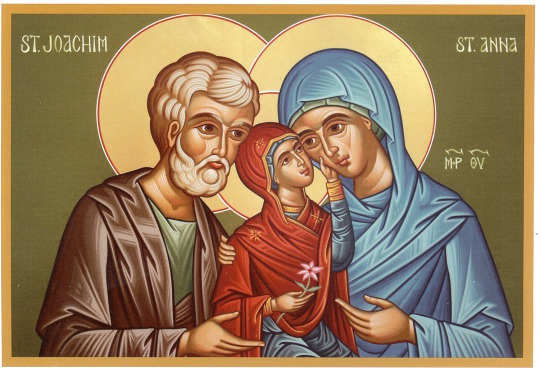
Ss. Joachim and Anna serve as a model for marriage, Mary the Mother of God is the fruit of their marriage. They also serve as a great example of a model relationship, with them coping with and dealing with the trials and struggles of infertility.
The Theotokos

In the context of a wedding, the Prescence of the Theotokos serves as a reminder of the importance of marriage union, and the sacred bond between spouses.
Wedding Feast at Cana

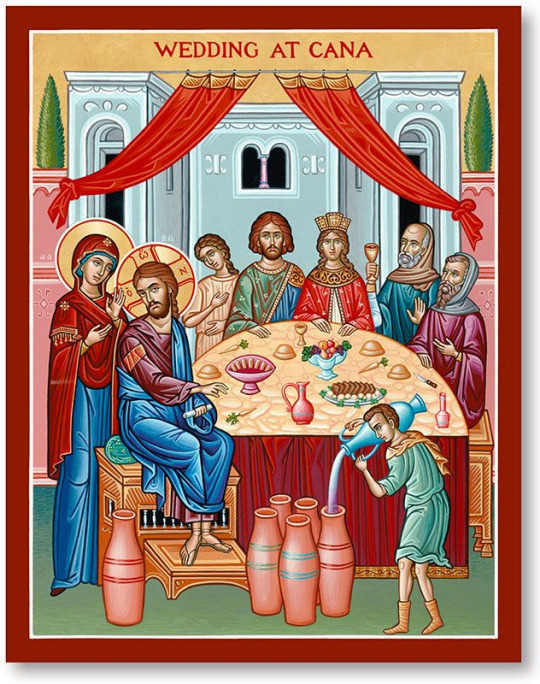
The Wedding Feast at Cana is a clear example of a happy wedding, one of praise and celebration that Christ himself was present at. The depth of celebration, praise for the couple but Christ himself too is a perfect example of what a wedding should be.
Iconography of the song of songs
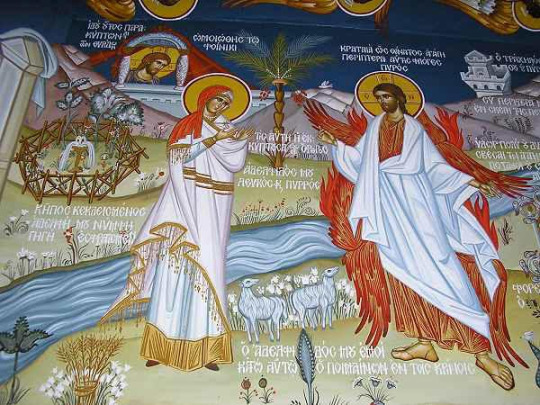
It is much harder to find, and not widespread, but iconography of the Song of Songs is perfect for a wedding, not only symbolising the love between spouses, but the love between mortal and divine.
#christianity#bible#christian#jesus#greek orthodox#russian orthodox#orthodox christianity#marriage#christian marriage#iconography#theotokos#Christ the Bridgegroom#St. Xenia#mary magdalene#virgin mary#catholic#catholicism#lord jesus christ#jesus christ
8 notes
·
View notes
Text
SOMETHING IN SOMETIMES By Emmelia M
SOMETHING IN SOMETIMESarising in artistic simplicity,something has been thought sorrowfully,in the ending of dreamy night rain.uncountable sometimes in reveries,in remedies,and notated elegies,I take the sheer elegance,not so long in meer poetic voyage.fluttering,converting,afterwards this is the tenant confessions,for I confirmed to my soul,I shall live in my passion,on my longings to the life…

View On WordPress
0 notes
Photo

LUNEDI 02 GENNAIO 2023 - ♦️ SANTI BASILIO MAGNO E GREGORIO Nazianzeno ♦️ Basilio Magno (in greco antico: Βασίλειος ὁ Μέγας, Basíleios ho Mégas; in latino: Basilius Magnus («il Grande»); Cesarea in Cappadocia, 329 – Cesarea in Cappadocia, 1º gennaio 379) è stato un vescovo e teologo greco antico, venerato da tutte le Chiese cristiane; porta anche i titoli di confessore e Dottore della Chiesa. È considerato il primo dei Padri cappadoci. È uno dei quattro Padri della Chiesa d'Oriente che portano il titolo di "Grande" insieme ad Antonio Abate, Atanasio ed a Fozio di Costantinopoli. Era figlio di un ricco retore e avvocato, mentre suo nonno, che fu discepolo di Gregorio Taumaturgo del Ponto, morì martire nella persecuzione di Diocleziano. Sua nonna Macrina, i suoi genitori Basilio ed Emmelia, i fratelli Gregorio (vescovo di Nissa) e Pietro (vescovo di Sebaste) e la sorella primogenita, Macrina, sono pure venerati dalla Chiesa cattolica come santi. Fu molto amico di Gregorio Nazianzeno, venerato come santo e commemorato nello stesso giorno, il 2 gennaio. Ha scritto la regola che ancora oggi ispira la vita dei Monaci basiliani. Gregorio Nazianzeno Nazianzo, 329 – Nazianzo, 25 gennaio 390 circa) è stato un vescovo e teologo greco antico; fu maestro di san Girolamo. Venerato dalle Chiese cristiane, è riconosciuto dalla Chiesa cattolica come Dottore e Padre della Chiesa. È uno dei Padri cappadoci.Nacque a Arianzo, cittadina presso Nazianzo in Cappadocia. Figlio di Gregorio e Nonna. Il padre, che era ebreo della setta degli Ipsistari, fu convertito dalla moglie al cristianesimo e divenne vescovo di Nazianzo. Il fratello Cesario (morto nel 368) fu dottore presso la corte dell'imperatore Giuliano e governatore di Bitinia. Gregorio, nato qualche anno dopo il concilio di Nicea nel quale si condannò l'eresia ariana, fu fortemente condizionato per tutta la vita dalle lotte che si scatenarono attorno alla definizione della vera natura della Trinità. Studiò prima a Cesarea in Cappadocia, dove conobbe e divenne amico di Basilio, poi a Cesarea Marittima e ad Alessandria presso il Didaskaleion, infine, tra il 350 e il 358, ad Atene, sotto Imerio; qui conobbe il futuro imperatore.. (presso Tradizioni Barcellona Pozzo di Gotto - Sicilia) https://www.instagram.com/p/Cm6TvI-ocvT/?igshid=NGJjMDIxMWI=
0 notes
Photo

June 1816,
A sudden snowstorm blankets all the countryside,
So Mary Shelley had to stay inside and she wrote Frankenstein,
Oh, 1816 was the year without a summer.
- 1816, The Year without a Summer by Rasputina
| 2017 was a rough year, so I began 2018 with a little more hope and determination, recovery and hard work. Forward only, never look back. |
#my art#Emmelia#oc#oc art#art#digital art#illustration#snow#winter#blood#zombie#zombie girl#painting#digital painting#digital artist#horror#horror art
34 notes
·
View notes
Note
marnie and nialls possible parents? aside from floran, of course.
That’s gonna be a long list ww ^^
Hmm.. the canon possible parents would be:
MU
Azura (musical couple let’s go!)
Elise (I’m always weak for Liege/Retainer lmao)
Effie (this is just in: “I have a crush on all my coworkers”)
Beruka (A cute assassin who is also a wyvern rider? Yes.. I love..)
Camilla (”I worship and bow to you, please take my hand and accept my feelings” now thats a draft lmao)
Charlotte (”I know you’re after my gold. Still, I believe that you have a reason for this. Also your strength is super attractive, let’s be honest)
Felicia (Let’s not forget that Floran loves everything that’s adorable.. despite everything)
Kagero (Floran notices every time Kagero sneaks up on him and says that he notices because how can you not?? realize that your crush is near but thats a draft ^^;)
Orochi (I haven’t got ideas..yet)
Setsuna (”You’re so clumsy and I find that cute.. Let me help yo- SCREAMS”)
Subaki (”We might be similar but I’m pretty sure that I’m gayer for you”)
Odin (Floran finds his little acts and tales cute,, he cant help but smile watching him hehe)
Selena(”Do you want to fight and marry me, tsunderella”)
Arthur (Floran!!adores!! Arthur!! He’s!! adorable!!)
Nyx (”Weren’t you the one who cursed my father? I thought that I wanted revenge.. then why do I feel so drawn to you?”)
Peri (MURDER NOBLES COUPLE)
Kaze (”Damn it.. why are you so handsome”)
Niles (You are peasant but I kind of like you,
Leon (i didnt come up with anything yet djkhsfk)
And here are Floran’s sona S-Supports:
Jay (”Sir, you have really bad morals but I like you.”)
Brando (local wyvern lord falls for adorable baking mercenary, whats good)
Antoine (though im not sure if we ever got this done hm | “Ok I broke our engagement by leaving and I’m sorry about that, want to try that again”)
Amane (”I can’t get you out of my head.. I know you’re afraid of falling in love again but please give me a chance”)
Mercedes (Rivals to lovers? Yes. YES. ALSO CLOTHES FOR WYVERNS)
Fae (”Bonding over picknicks and wyvern flights… I love you..”)
Mana (“You’re so cute I need to mention it in the 4 supports we have you might end up forgetting that you’re adorable”)
Rozuel (The angel and her wyvern lord on the search find their hiding place)
Vivi (childhood friends who used to mutually crush on each other to lovers.. yes. GOOD STUFF)
Mei-Hua (”Really, I am only marrying you to see your mother again”)
Rae (Misunderstandings lead to bonding over some large scalie, accidentally confessing and love, apparently)
Kamakiri (”You’re a really cute ninja and I’m sorry that I’m such a prick”)
Emmelia (”I found your novel parts and I love them. And you.”)
Jin (”WhoA IS THAT A WYVERN? LETS HANG AND MARRY”)
Morien (”Weren’t you weirded out by my presence?” “-blushes- N-no?”)
Faya (”I’m sorry for forgetting you and the day we met even though you harbored feelings for me”)
Kiyoshi (”I doubt your loyality but you’re actually a good bean” oh we still need to write that djhfjhs)
Venus (”Your father killed my mother, now PAY.. actually you’re cute, let’s date”)
Tristan (Bonding over Elise, two bros marrying each other and promise each other to protect each other and Elise)
Ari (The wyvern lord and his waifu) this one’s not written yet hgnfh
Marie (Letter buddies from the past) this isn’t written yet either hcndjdf
Amelia (We know each other from the Ice Tribe and are descendants of big noble houses, let’s hang)
#fatesona#if you wanted to hear details about parent specific niall and marnie im sorry i assumed you wanted to hear about his supports hfdjdgnj#canon characters#ask#tristan#ari#marie#amelia#venus#faya#morien#jin#emmelia#kamakiri#brando#jay#rae#mei-hua#vivi#mana#rozuel#mercedes#fae#antoine#amane#did i forget someone kdjfhkjs#floran
6 notes
·
View notes
Text
SAINT OF THE DAY (January 2)

St. Basil was one of the most distinguished Doctors of the Church and Bishop of Caesarea.
He was born into the wealthy Cappadocian Greek family of Basil the Elder and Emmelia of Caesarea in Cappadocia around 330.
He was one of ten children, and his parents were known for their piety.
He ranks after Athanasius as a defender of the Oriental Church against the heresies of the fourth century, especially Arianism, which denied the divine nature of Jesus Christ.
He was a strong supporter of the Nicene Creed.
With his friend Gregory of Nazianzus and his brother Gregory of Nyssa, he was part of the trio known as "The Three Cappadocians."
Basil resisted the pressure from Emperor Valens, an Arian himself, who wanted to keep him in silence and admit the heretics to communion.
When the great St. Athanasius died, the responsibility of being the defender of the faith against Aryanism fell upon Basil.
Historians disagree about the exact date of Basil's death, which was either 1 or 2 January 379.
Basil was tireless in pastoral care. He preached twice a day to huge crowds, built a hospital that was called a wonder of the world—as a youth he had organized famine relief and worked in a soup kitchen himself—and fought the prostitution business.
Basil was also best known as an orator. Though not recognized greatly in his lifetime, his writings rightly place him among the great teachers of the Church.
Seventy-two years after his death, the Council of Chalcedon described him as “the great Basil, minister of grace who has expounded the truth to the whole earth.”
NOTE:
Nicene Creed, also called Niceno-Constantinopolitan Creed, a Christian statement of faith that is the only ecumenical creed because it is accepted as authoritative by the Roman Catholic, Eastern Orthodox, Anglican, and major Protestant churches.
0 notes
Photo

things i didn’t expect: a very warm reception for tybalt by @soundlessroom‘s detlef and @dextronoms‘s emme
thank u for giving this man ur lov
11 notes
·
View notes
Text
Today, the Church remembers and gives thanks for one of the greatest Christian thinkers, teachers, and saints: Gregory of Nyssa.
Ora pro nobis.
Gregory of Nyssa (c. A.D. 335 – 395), was bishop of Nyssa from 372 to 376 and again from 378 until his death. Gregory, his elder brother, Basil of Caesarea, and their friend Gregory of Nazianzus, are collectively known as the Cappadocian Fathers.
Gregory lacked the administrative ability of his brother Basil or the contemporary influence of Gregory of Nazianzus, but he was an erudite theologian who made significant contributions to the orthodox doctrine of the Trinity and the Nicene Creed.
Gregory’s parents had suffered persecution for their faith: he writes that they “had their goods confiscated for confessing Christ.” Gregory’s maternal grandmother, Macrina the Elder is also revered as a saint and his maternal grandfather was a martyr as Gregory put it “killed by Imperial wrath” under the persecution of the Roman Emperor Maximinus II.
Gregory’s temperament is said to have been quiet and meek, in contrast to his brother Basil, who was known to be much more outspoken.
Gregory was first educated at home, by his mother Emmelia and sister Macrina. Little is known of what further education he received. It seems likely that he continued his studies in Caesarea, where he read classical literature, philosophy and perhaps medicine. Gregory himself claimed that his only teachers were Basil, “Paul, John and the rest of the Apostles and prophets.”
Gregory was a highly original and sophisticated thinker, and his writings are often difficult to classify. This is often due to the lack of systematic structure and the presence of terminological inconsistencies in Gregory’s work.
Gregory, following Basil, defined the Trinity as “one essence in three persons”, the formula adopted by the Council of Constantinople in 381. Like the other Cappadocian Fathers, he was a “homoousian”, a believer in the essential oneness of God, three in person but one in being. According to Gregory, the differences between the three persons of the Trinity reside in their relationships with each other, and the triune nature of God is revealed through divine action (despite the unity of God in His action).
Gregory was one of the first theologians to argue that God is infinite. His main argument for the infinity of God is that God’s goodness is an essential characteristic of God, and that being limitless it follows that God is also limitless. An important consequence of Gregory’s belief in the infinity of God is his belief that God, as limitless, is essentially incomprehensible to the limited minds of created beings, in contrast to some of his contemporaries, and of many preachers today. In his ‘Life of Moses’, Gregory writes: “…every concept that comes from some comprehensible image, by an approximate understanding and by guessing at the Divine nature, constitutes a idol of God and does not proclaim God.”
Gregory’s theology was thus apophatic: that is, he proposed that God should be defined in terms of what we know He is not rather than what we might speculate Him to be. Accordingly, he taught that due to God’s infinitude, a created being can never reach an absolute understanding of God, and thus for man in both life and the afterlife there is a constant progression towards the unreachable knowledge of God, as the individual continually transcends all which has been reached before. In the ‘Life of Moses’, Gregory speaks of three stages of this spiritual growth: initial darkness of ignorance, then spiritual illumination, and finally a darkness of the mind in mystic contemplation of the God who cannot be comprehended.
Gregory seems to have believed so deeply in the love of God that ultimately nothing and no one in creation could fail to accept God’s love, and so believed that humankind will be collectively returned to sinlessness, while still paradoxically maintaining the orthodox belief in the necessary sacrament of Baptism for salvation, and that human free will, even in the full presence of God, could still choose to remain separated from God.
Gregory’s beliefs about human nature were founded on the essential distinction between the created and uncreated. Man is a material creation, and thus limited, but created with limitless capacity in that his immortal soul has an indefinite capacity to grow closer to God through the imitation of Christ. Gregory also held such a high view of humankind the he strongly believed that the soul is created simultaneous to the creation of the body at conception, and that unborn children were thus full and true persons made in the image of God. This also informed his teachings about the inherent evil of slavery.
To Gregory, the human being is exceptional, being created in the image of God. Humanity is theomorphic both in having self-awareness and free will, the latter which gives each individual existential power, because to Gregory, in disregarding God one negates one’s own existence. In his ‘Song of Songs’, Gregory metaphorically describes human lives as paintings created by apprentices to a master: the apprentices (the human wills) imitate their master’s work (the life of Christ) with beautiful colors (virtues), and thus man strives to be a reflection of Christ.
Gregory was one of the first Christian voices to say that slavery as an institution was inherently evil and sinful. He believed that slavery, as did abortion, violated mankind’s inherent worth, and the nature of humanity to be free; a departure from classical, and Judeo-Christian precedent which he rooted in Genesis, arguing that man was given mastery of animals but not of humans. His was the first and only sustained critique of the institution of slavery and infanticide made in the ancient world.
Anthony Meredith writes of Gregory’s mystical and apophatic writings in his book Gregory of Nyssa (The Early Church Fathers) (1999):
“Gregory has often been credited with the discovery of mystical theology, or rather with the perception that darkness is an appropriate symbol under which God can be discussed. There is much truth in this….Gregory seems to have been the first Christian writer to have made this important point…”
J. Kameron Carter writes about Gregory’s stance on slavery, in the book Race a Theological Account (2008):
“What interests me is the defining features of Gregory’s vision of the just society: his unequivocal stance against ‘the peculiar institution of slavery’ and his call for the manumission of all slaves. I am interested in reading Gregory as a fourth century abolitionist intellectual….His outlook surpassed not only St. Paul’s more moderate (but to be fair to Paul, in his moment, revolutionary) stance on the subject but also those of all ancient intellectuals — Pagan, Jewish and Christian – from Aristotle to Cicero and from Augustine in the Christian West to his contemporary, the golden mouthed preacher himself, John Crysotom in the East. Indeed, the world would have to wait another fifteen centuries — until the nineteenth century, late into the modern abolitionist movement — before such an unequivocal stance against slavery would appear again.”
Blessed Gregory, we remain still so mired in sin that there are more humans being held in slavery, or murdered as infants, today than at any time in recorded history. There are so many who believe that they know with certainty the mind of God that they invoke the Holy One to do terrible acts of violence, or lead them away from the true Faith and lead many astray.
That we, made in the image of God, called to pursue the imitation of Christ and work for the freedom, life, and salvation of all peoples, might return in all humility to the mystical/interior meditation upon the absolute love of God… ora pro nobis.
Amen.
Almighty God, you have revealed to your Church your eternal Being of glorious majesty and perfect love as one God in Trinity of Persons: Give us grace that, like your bishop Gregory of Nyssa, we may continue steadfast in the confession of this faith, and constant in our worship of you, Father, Son, and Holy Spirit; for you live and reign for ever and ever.
Amen.
#UnbornLivesMatter #AbortionIsMurder #slaveryisevil #Godlovesyou
#father troy beecham#christianity#jesus#saints#god#salvation#martyrs#faith#early church#peace#theology#monasticism
1 note
·
View note
Photo

some Emmelias to get used to drawing her
#the arcana#the arcana game#fan apprentice#apprentice Emmelia#artists on tumblr#my art#I based her on Aurora and Belle from my two favorite disney movies#in case u couldn't tell lmao#the colour scheme is based on a blue jay tho!#and the red ribbon around her wrist was a gift from a childhood friend
50 notes
·
View notes